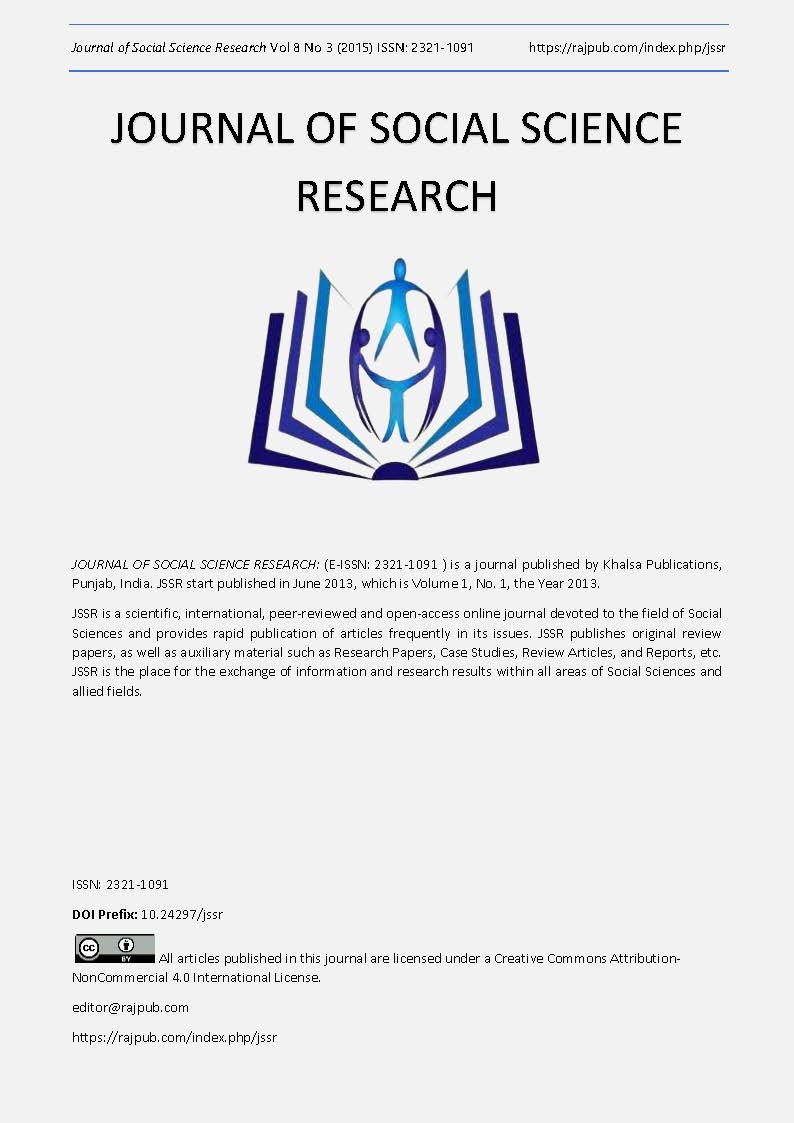A Survey on the Impact of Instructing Stress and Pronunciation Rules on the Proficiency and Effective Communication among Students of Medicine and Affiliated Fields
DOI:
https://doi.org/10.24297/jssr.v8i3.4072Keywords:
Stress, Proficiency, Pronunciation, Effective CommunicationAbstract
It has been observed that most students in the field of medicine/medicine-related experience great difficulties in correct pronunciation. Some researchers put emphasis on teaching the phonetic features and phonological rules in order to improve the pronunciation of learners. They have presented so many techniques but unfortunately these techniques have been ignored by most Iranian EFL instructors, and instead, meaning as well as structure has been given more priority.The purpose of this study, therefore, is to determine whether teaching word stress patterns and pronunciation has any significant effect on more accurate pronunciation and consequently on the effective and meaningful communication. In this experimental study, 30 Audiology students and 30 Optometry students in their 4th semester who had passed their general English course were used as subjects. 15 out of each group were treated as control and 15 others as Experimental Group. A pre-test was administered based on 1) general proficiency and 2) A word stress test pattern. Treatment (teaching word stress rules) was given to the experimental group while the control group received none. After the treatment, the results based on the two pre-test and post-test were compared and analyzed through SPSS.Results showed that the P value before the treatment was not significant (P= 0.690) while the post test which was administered after the treatment was of a noteworthy significance (P<0.001). This indicates the effect of treatment. Regarding the importance of teaching stress and pronunciation patterns, our findings revealed that teaching those rules can be the main reason for fluency and a precise pronunciation, which has been ignored in almost all of the educational syllabi used to teach English to the students of Shahid Beheshti Medical University. Analysis also indicated that subjects in the experimental group possessed a better mean compared to the controlled ones. Also based on the repeated measure analysis, the correlation between the scores before and after treatment was significant (p<0.001).Downloads
Download data is not yet available.
References
1. PENNINGTON, M.C. Recent research in L2 phonology: implications for practice. In: J. Morley (Org.)
Pronunciation pedagogy and theory: new ways, new directions. Illinois: Pentagraph Print, p. 92- 107, 1994.
2. Braithwaite, Merle. (2008). Sounds right. New Zealand: Curriculum Concepts.
3. Brown, A. (2006). Sounds, symbols & spellings. Singapore: McGraw-Hill (Education) Asia.
4. Dauer, R. (1992). Accurate English. Upper Saddle River, New Jersey: Prentice Hall.
5. Gilbert, J. (1993). Clear speech. Cambridge: Cambridge University Press.
6. Gottlieb, M. (2006). Assessing English language learners. California: Corwin Press.
7. Hewings, M. (1993). Pronunciation tasks. Cambridge: Cambridge University Press.
8. Thornbury, S. (2005). How to teach speaking. Harlow: Longman.
9. Marinova-Todd, S.H., Marshall, D.B., & Snow, C.E. (2000). Three misconceptions about age and L2 learning.
TESOL Quarterly, 34(1), 9-34.
10. Masgoret, A., & Gardner, R. (2003). Attitudes, motivation, and second language learning: A meta-analysis of
studies conducted by Gardner and associates. Language Learning, 53(Suppl. 2), 167-210.
11. Moyer, A. (2007). Do language attitudes determine accent? A study of bilinguals in the USA. Journal of
Multilingual and Multicultural Development, 28(6), 502-518.
12. Moyer, A. (2008). Ultimate attainment in L2 phonology: The critical factors of age, motivation, and instruction.
Studies in Second Language Acquisition, 21(1), 81-108.
Pronunciation pedagogy and theory: new ways, new directions. Illinois: Pentagraph Print, p. 92- 107, 1994.
2. Braithwaite, Merle. (2008). Sounds right. New Zealand: Curriculum Concepts.
3. Brown, A. (2006). Sounds, symbols & spellings. Singapore: McGraw-Hill (Education) Asia.
4. Dauer, R. (1992). Accurate English. Upper Saddle River, New Jersey: Prentice Hall.
5. Gilbert, J. (1993). Clear speech. Cambridge: Cambridge University Press.
6. Gottlieb, M. (2006). Assessing English language learners. California: Corwin Press.
7. Hewings, M. (1993). Pronunciation tasks. Cambridge: Cambridge University Press.
8. Thornbury, S. (2005). How to teach speaking. Harlow: Longman.
9. Marinova-Todd, S.H., Marshall, D.B., & Snow, C.E. (2000). Three misconceptions about age and L2 learning.
TESOL Quarterly, 34(1), 9-34.
10. Masgoret, A., & Gardner, R. (2003). Attitudes, motivation, and second language learning: A meta-analysis of
studies conducted by Gardner and associates. Language Learning, 53(Suppl. 2), 167-210.
11. Moyer, A. (2007). Do language attitudes determine accent? A study of bilinguals in the USA. Journal of
Multilingual and Multicultural Development, 28(6), 502-518.
12. Moyer, A. (2008). Ultimate attainment in L2 phonology: The critical factors of age, motivation, and instruction.
Studies in Second Language Acquisition, 21(1), 81-108.
Downloads
Published
2015-08-20
How to Cite
Meymeh, M. H., & Khadembashi, N. (2015). A Survey on the Impact of Instructing Stress and Pronunciation Rules on the Proficiency and Effective Communication among Students of Medicine and Affiliated Fields. JOURNAL OF SOCIAL SCIENCE RESEARCH, 8(3), 1695–1699. https://doi.org/10.24297/jssr.v8i3.4072
Issue
Section
Articles
License
 All articles published in Journal of Advances in Linguistics are licensed under a Creative Commons Attribution 4.0 International License.
All articles published in Journal of Advances in Linguistics are licensed under a Creative Commons Attribution 4.0 International License.




